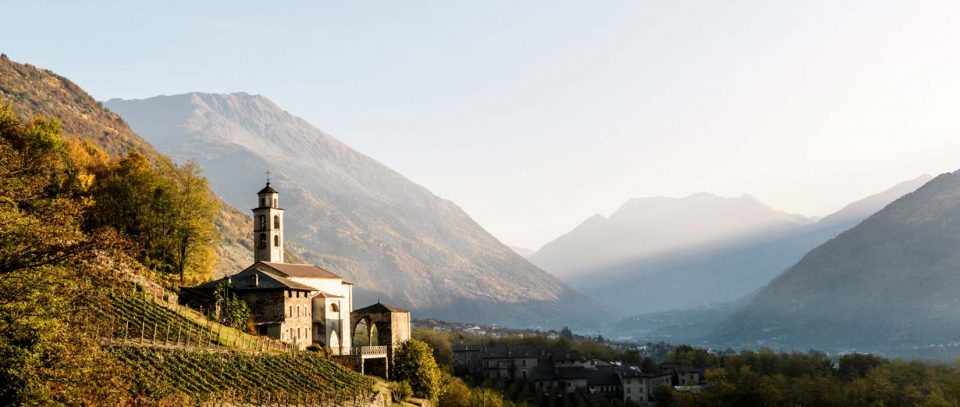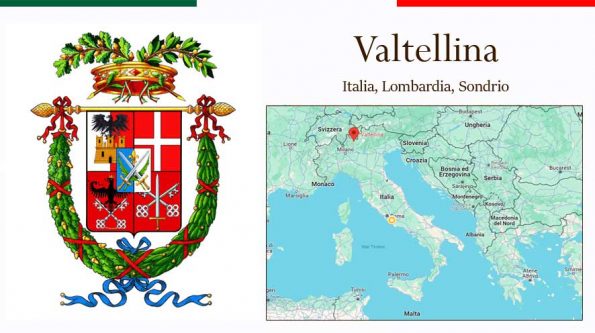In the heart of Valtellina, a valley nestled between the majestic Italian Alps, stands a symbol of harmony between man and nature: the dry stone walls. These structures, which stretch over 2,500 kilometres along the Rhaetian side of the province of Sondrio, are not only an example of primitive architecture but represent an indissoluble bond with the land that has nourished and sustained local communities for centuries.
Unesco and the Recognition of an Ancient Art - Recognised as a 'Historic Rural Landscape', the dry stone walls of the Valtellina have been given a place of honour on the UNESCO Intangible World Heritage List. This distinction underlines the importance of a construction technique that, without the use of mortar or cement, has made it possible to create lasting works that blend in perfectly with their surroundings.
Peasant Engineering and Land Transformation - Dry stone walls were born out of the need to adapt an impervious territory to the needs of agriculture. With steep slopes and difficult terrain to cultivate, the inhabitants of Valtellina demonstrated admirable resilience and stubbornness, transforming the mountain into a fertile garden. The careful choice of stones and their strategic positioning made it possible to cultivate 820 hectares of land, giving rise to terraces that today house fine vineyards.
Viticulture and the Breath of Valtellina - The terracing is not only a testimony to engineering, but also the foundation of excellent viticulture. The Valtellina vineyards, protected by the Rhaetian Alps and the Orobic Pre-Alps, benefit from an ideal climate, with constant ventilation thanks to the breeze from Lake Como. This unique microclimate contributes to creating Valtellina wines of character, with a bouquet of aromas and fragrances that reflect the richness of this territory.
Strada del Vino della Valtellina: a journey through Culture and Nature
The Valtellina, a valley nestled in the heart of the Italian Alps, offers its visitors a unique experience of immersion in culture and nature thanks to theValtellina Wine and Food Trail Association. This organisation invites tourists and enthusiasts to explore the area through a series of itineraries that celebrate the beauty and traditions of this region.
The Terraced Terraces Route: A Route of Beauty and History - The jewel in the crown of the itineraries is the Via dei Terrazzamenti, a route of around 70 kilometres that stretches along the Rhaetian side of the Sondrio province, linking Morbegno to Tirano. This road, which runs between 300 and 700 metres above sea level, is an invitation to discover the terraced vineyards that characterise the Valtellina landscape. Trekking along this route is particularly impressive in autumn, when the vivid colours of nature offer breathtaking views.
Valtellina Wine Trekking: A Sensory Experience - For those wishing to get closer to the dry stone walls, symbols of ancient building know-how, the Valtellina Wine Treks are the ideal option. With 11 loop trails that unravel along the 2,500 kilometres of dry stone walls, these itineraries offer an experience accessible to everyone, regardless of physical fitness. At the end of each tour, participants are invited to taste typical Valtellina products and the renowned local wine, thus celebrating the end of an unforgettable adventure.
E-bike Wine Tour: Innovation meets Tradition - For cycling enthusiasts, E-bike Wine Tours are the perfect synthesis of exploration and gastronomy. These tours take you through the terraced landscapes of Valtellina, exploring ancient villages and historic wine cellars, all on electric bikes that make the journey easier even on the most arduous stretches. The reward for the explorers is a stop in the local wine cellars, where they can savour typical products accompanied by a glass of wine, a symbol of Valtellina's excellence.
Two important awards for Valtellina
In 2018, UNESCO awarded the title of Intangible Heritage of Humanity to the art of drystone walling. This recognition underlined the importance of an ancient and significant practice, which symbolises the close connection between man and the natural environment. Dry stone walls are not only stone structures, but also testify to man's ability to adapt to the land and shape it in harmony with agricultural and environmental needs.
Only two years later, another characteristic element of the Italian landscape received important recognition: the terraced vineyards of Valtellina. These vineyards, located on the Rhaetian side of the Alps, represent an ancient agricultural practice that has shaped the mountain landscape for centuries. Thanks to their beauty and historical value, the terraced vineyards of the Valtellina have been recognised as a Historic Rural Landscape and entered in the National Register of Historic Rural Landscapes.
The Valtellina terraces are much more than simple agricultural structures; they represent a collective heritage that unites environment, traditions and local history. The construction and maintenance of these terraces requires a deep knowledge of the territory and a constant commitment on the part of the local communities. In this way, terraced vineyards become not only a symbol of rural culture, but also an example of how man can shape the landscape in a sustainable and harmonious way.






